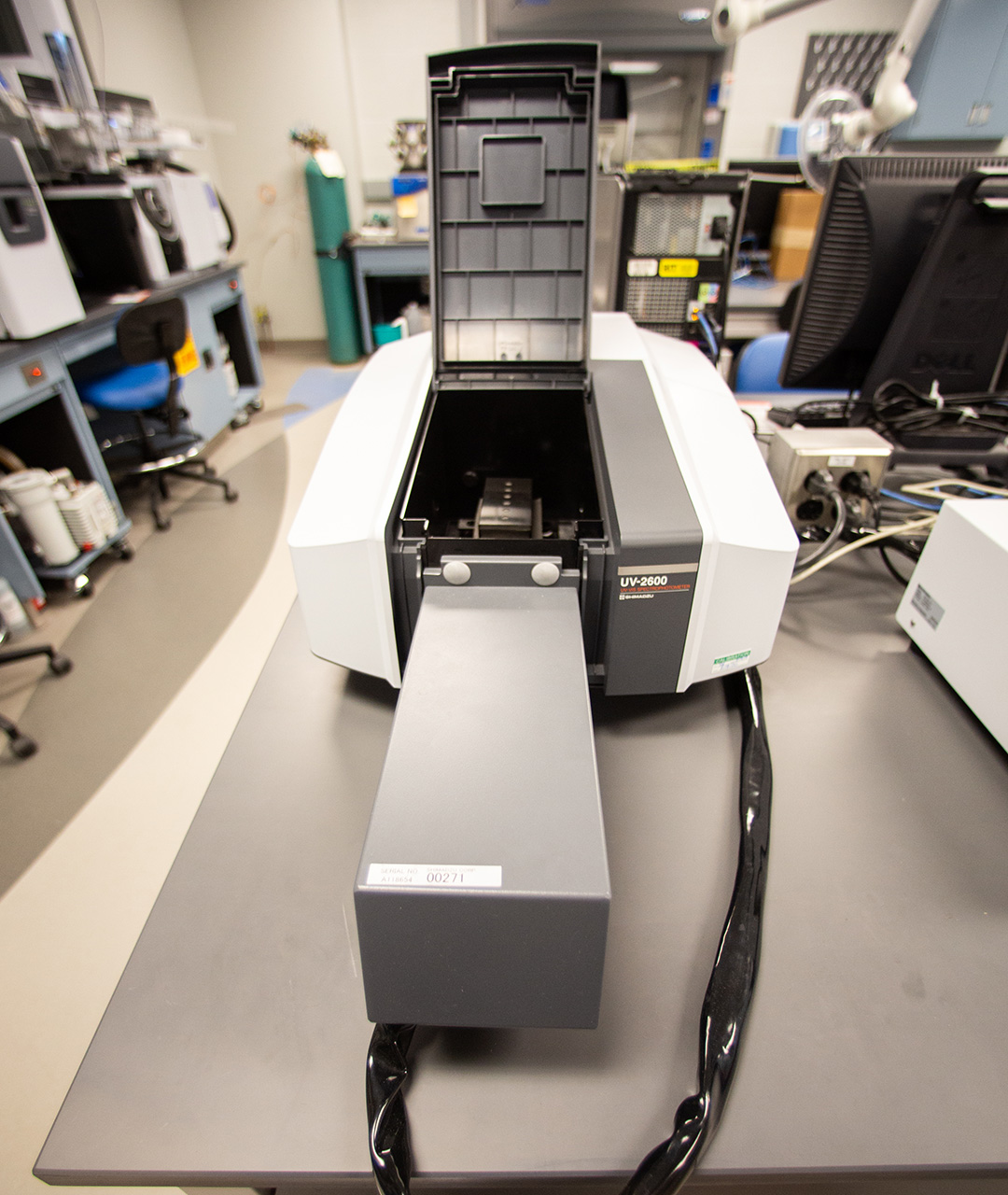Chemical Analysis Laboratory - Analytical Facilities
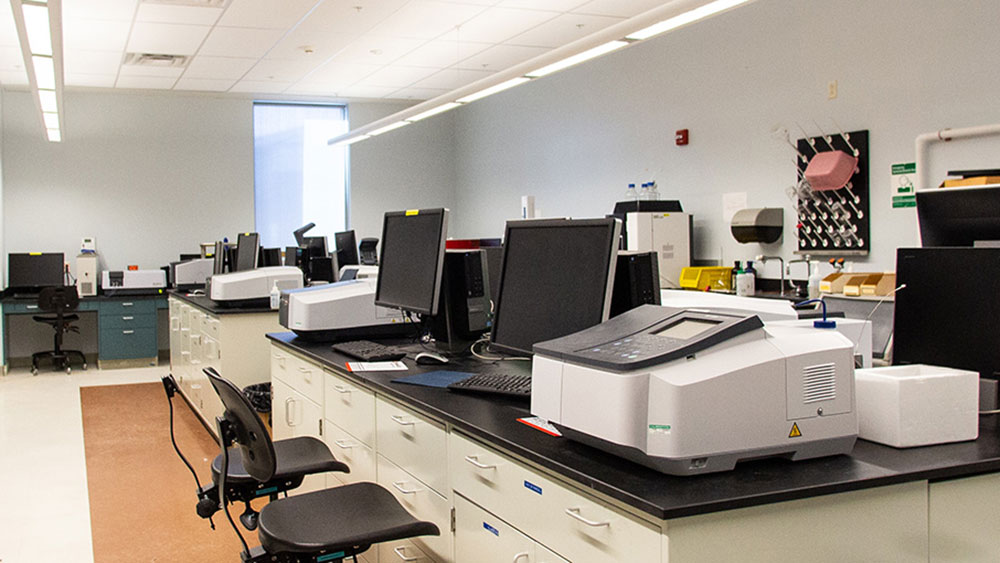
Chemical Analysis Laboratory
Analytical Facilities
- RIT/
- Chemical Analysis Laboratory
To sign up for instrument time, please use the Faces Scheduling System.
If you do not have an account then email Tom Allston, laboratory manager.
Atomic Absorption
Atomic-absorption (AA) spectroscopy uses the absorption of light to measure the concentration of gas-phase atoms. Since samples are usually liquids or solids, the analyte atoms or ions must be vaporized in a flame or graphite furnace. The atoms absorb ultraviolet or visible light and make transitions to higher electronic energy levels. The analyte concentration is determined from the amount of absorption.
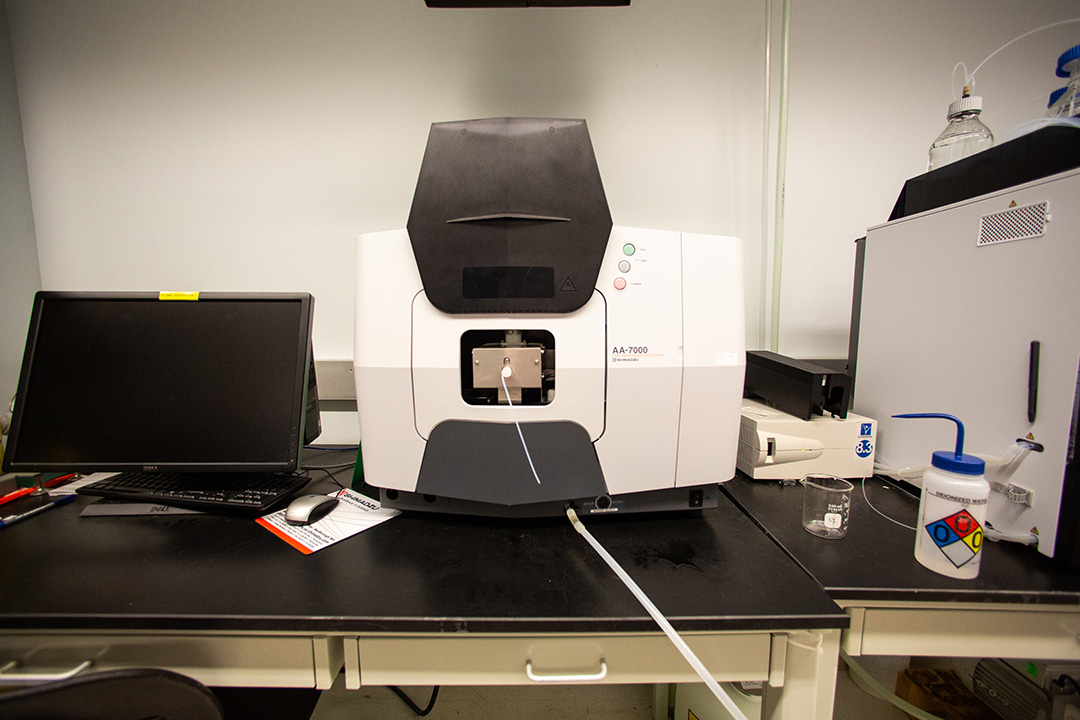
Fluorescence
Fluorescence spectrometry is a fast, simple and inexpensive method to determine the concentration of an analyte in solution based on its fluorescent properties. It can be used for relatively simple analyses, where the type of compound to be analyzed (‘analyte’) is known, to do a quantitative analysis to determine the concentration of the analytes. Fluorescence is used mainly for measuring compounds in solution.
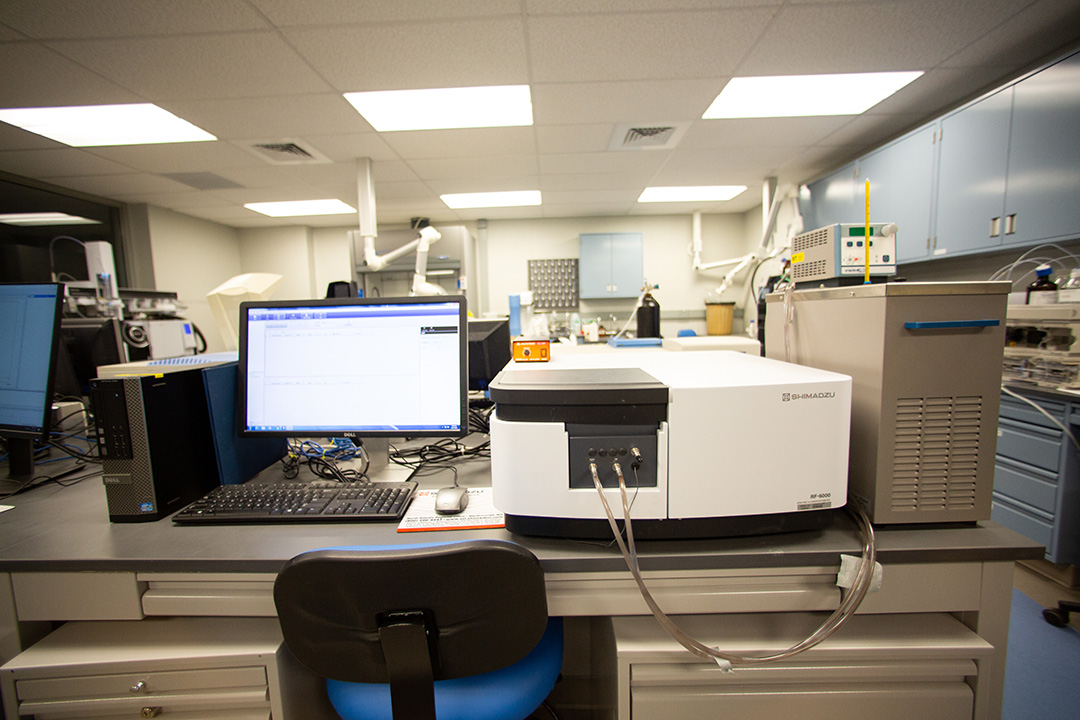
Fluorescence Spectroscopy
Fluorescence spectrometry is a fast, simple and inexpensive method to determine the concentration of an analyte in solution based on its fluorescent properties. It can be used for relatively simple analyses, where the type of compound to be analyzed (‘analyte’) is known, to do a quantitative analysis to determine the concentration of the analytes. Fluorescence is used mainly for measuring compounds in solution.
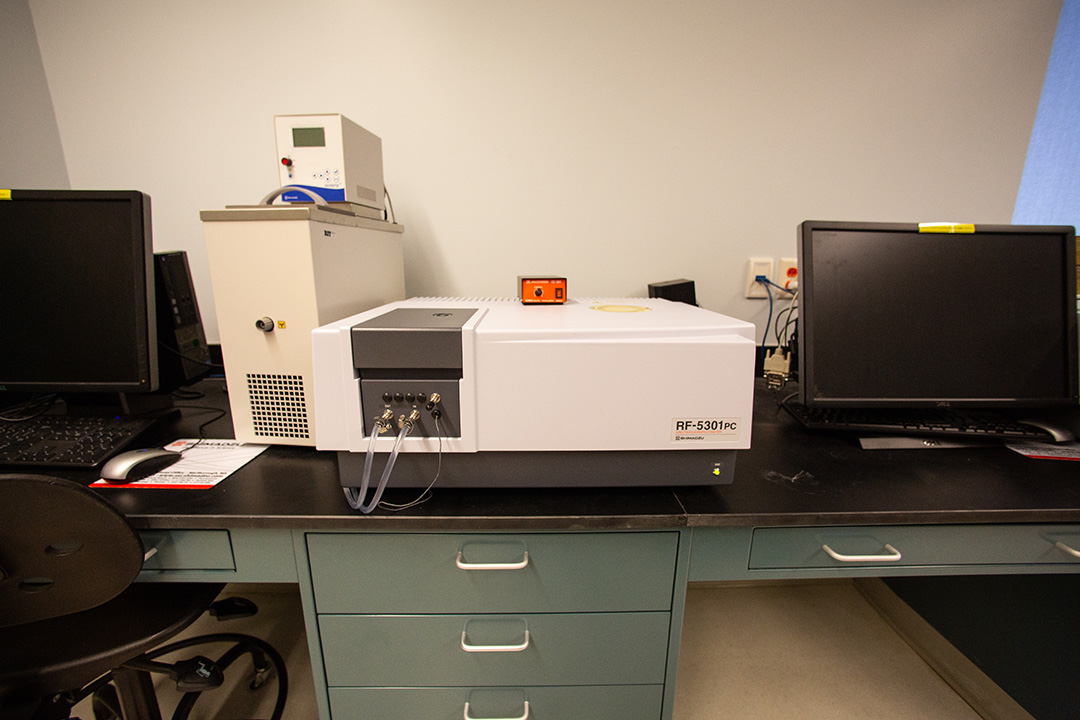
Fluorescence Spectroscopy
Fluorescence spectrometry is a fast, simple and inexpensive method to determine the concentration of an analyte in solution based on its fluorescent properties. It can be used for relatively simple analyses, where the type of compound to be analyzed (‘analyte’) is known, to do a quantitative analysis to determine the concentration of the analytes. Fluorescence is used mainly for measuring compounds in solution.
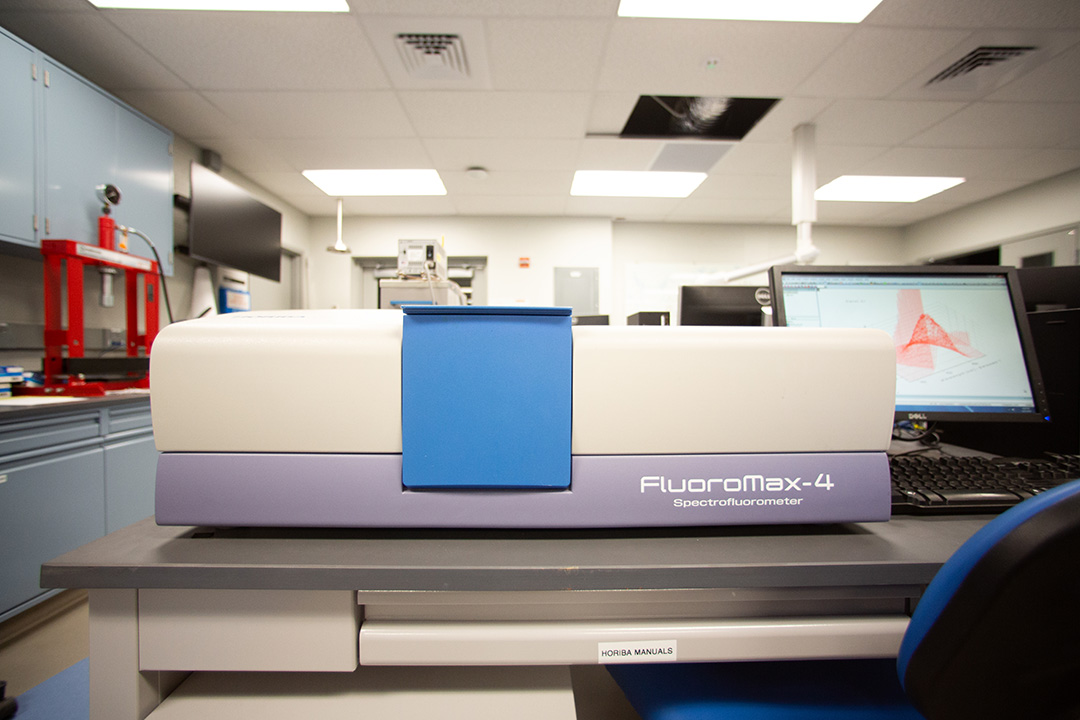
Gas Chromatography Mass Spectroscopy (GC-MS)
Gas chromatography mass spectrometry (GC/MS) is an instrumental technique, comprising a gas chromatograph (GC) coupled to a mass spectrometer (MS), by which complex mixtures of chemicals may be separated, identified and quantified.
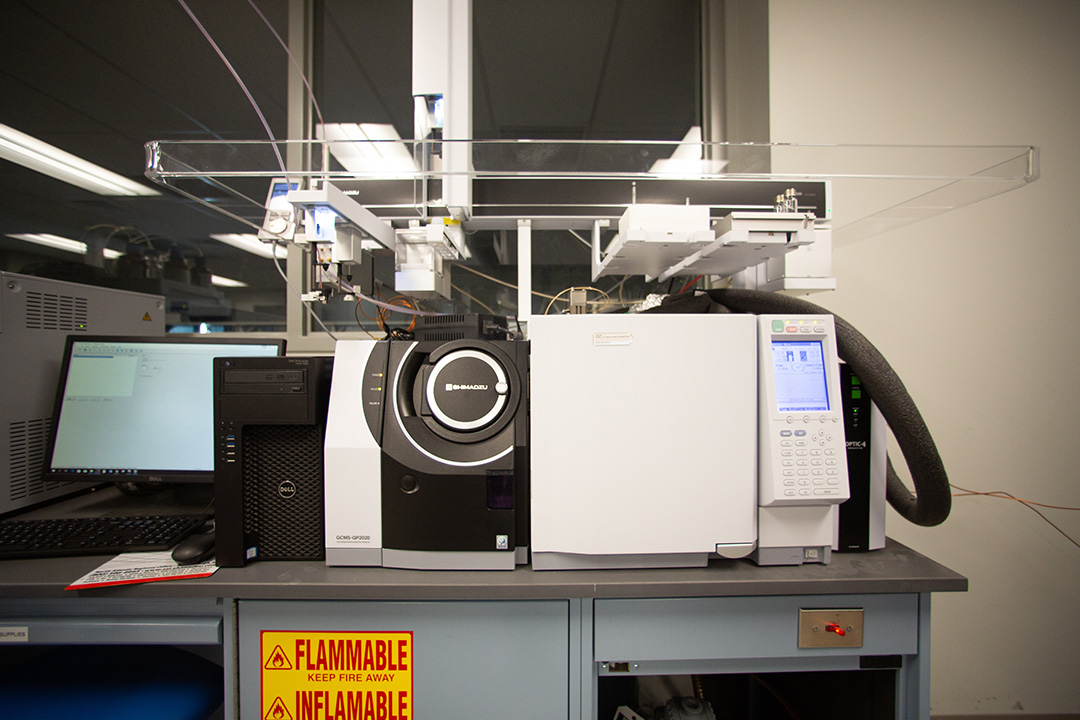
Gas Chromatograpy
Gas chromatography is an instrumental technique, comprising a gas chromatograph (GC) by which complex mixtures of chemicals may be separated, and quantified.
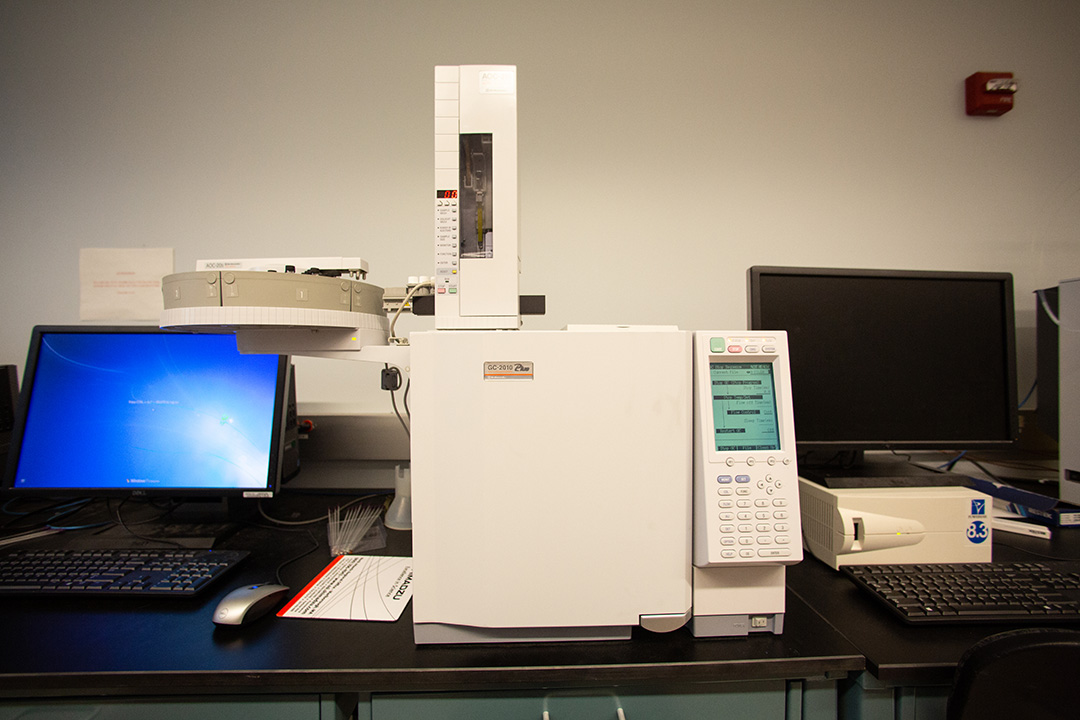
Gas Chromatograpy/Mass Spectroscopy (GC-MS)
Gas chromatography mass spectrometry (GC/MS) is an instrumental technique, comprising a gas chromatograph (GC) coupled to a mass spectrometer (MS), by which complex mixtures of chemicals may be separated, identfied and quantified.
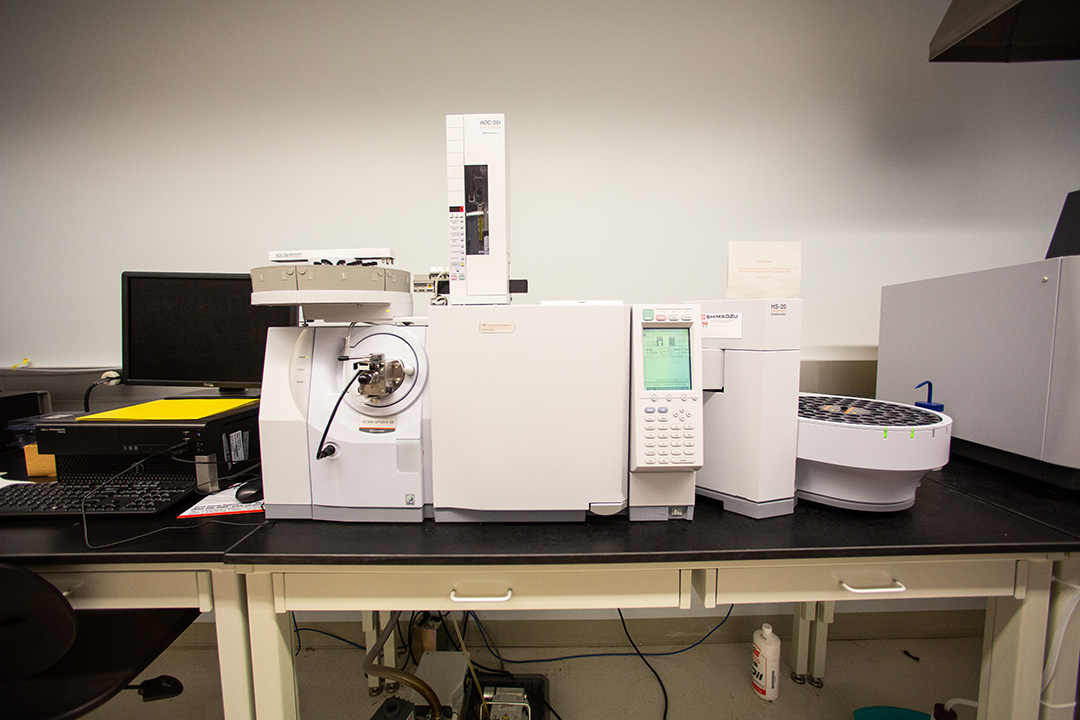
High Liquid Chromatography-Mass Spectroscopy Triple Quad (HPLC-MS)
High performance Liquid chromatography–mass spectrometry (HPLC-MS) is an analytical chemistry technique that combines the physical separation capabilities of liquid chromatography (or HPLC) with the mass analysis capabilities of mass spectrometry (MS).
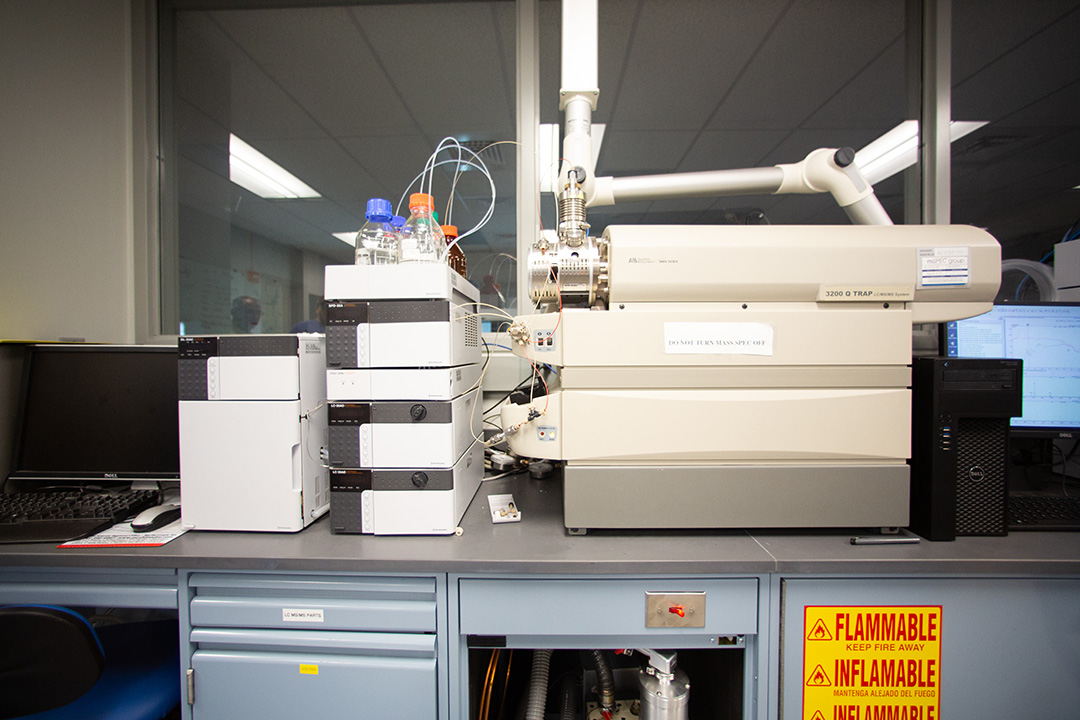
High Performance Liquid Chromatography
High-performance liquid chromatography (HPLC) is a technique in analytical chemistry used to separate, identify, and quantify each component in a mixture.
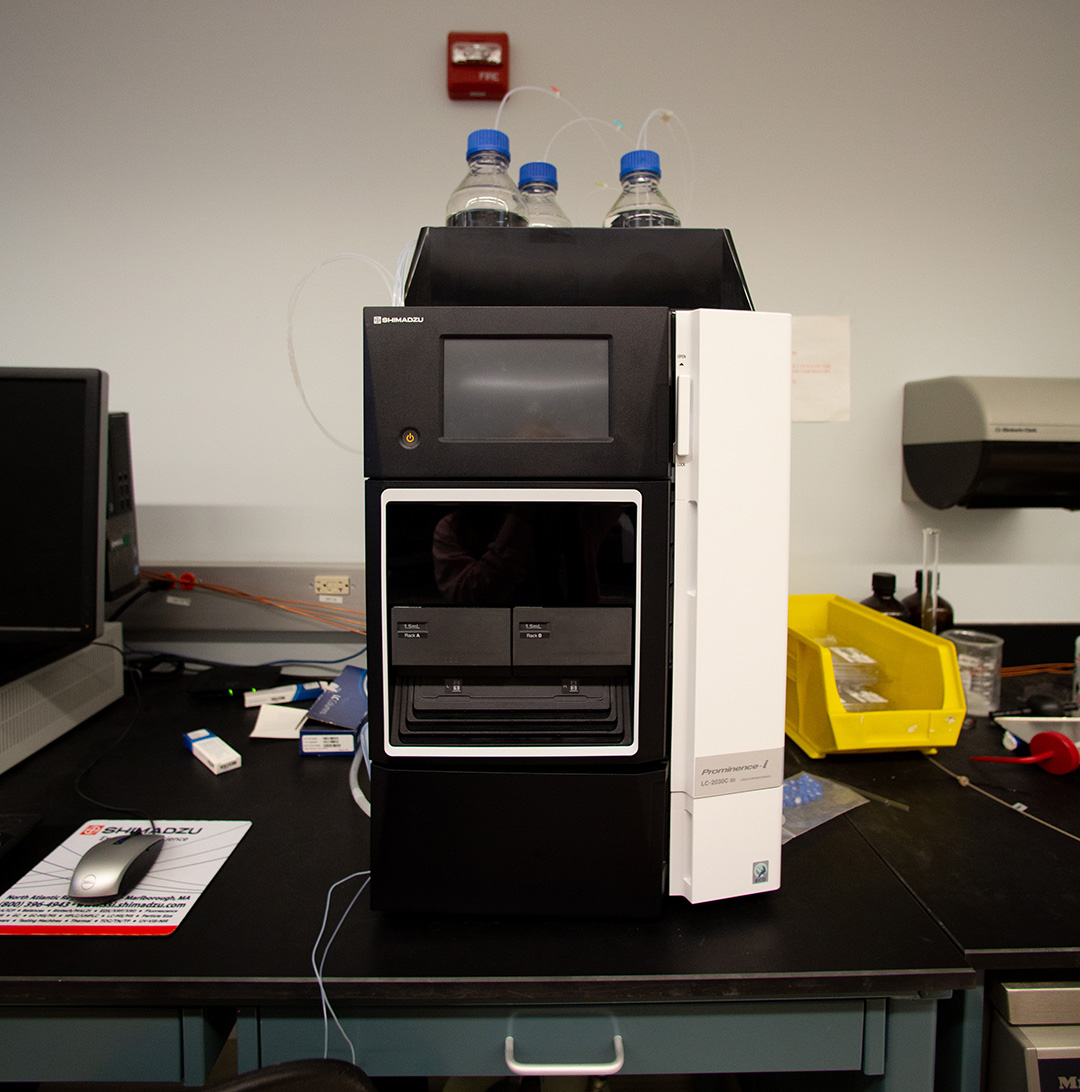
High Performance Liquid Chromatography - Mass Spectroscopy (HPLC-MS)
High performance Liquid chromatography–mass spectrometry (HPLC-MS) is an analytical chemistry technique that combines the physical separation capabilities of liquid chromatography (or HPLC) with the mass analysis capabilities of mass spectrometry (MS).
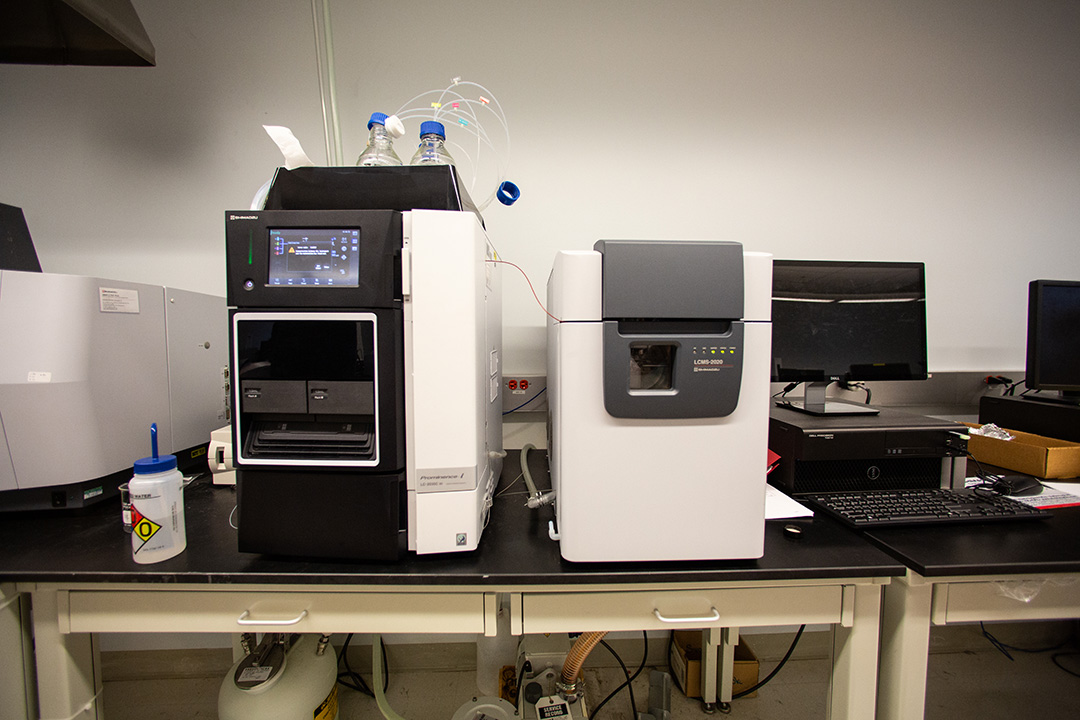
High Performance Liquid Chromatography (HPLC)
High-performance liquid chromatography (HPLC) is a technique in analytical chemistry used to separate, identify, and quantify each component in a mixture.
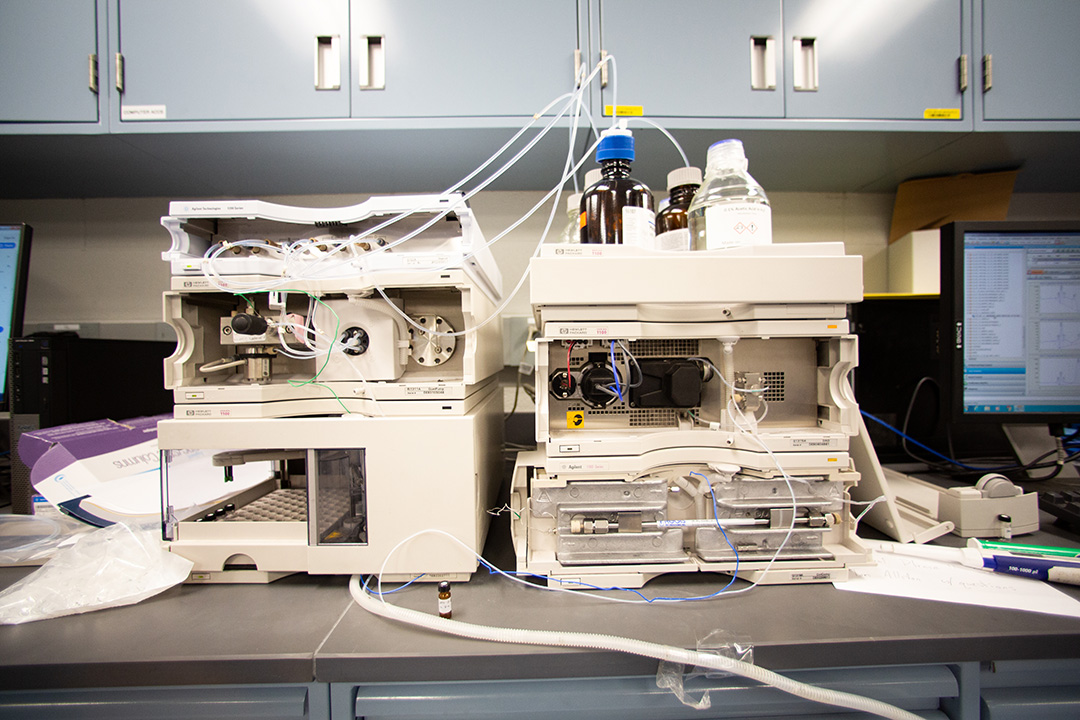
Infrared Spectrometer (FTIR)
Fourier Transform Infrared Spectroscopy (FTIR) is an analytical technique used to identify organic (and in some cases inorganic) materials. This technique measures the absorption of infrared radiation by the sample material versus wavelength. The infrared absorption bands identify molecular components and structures.
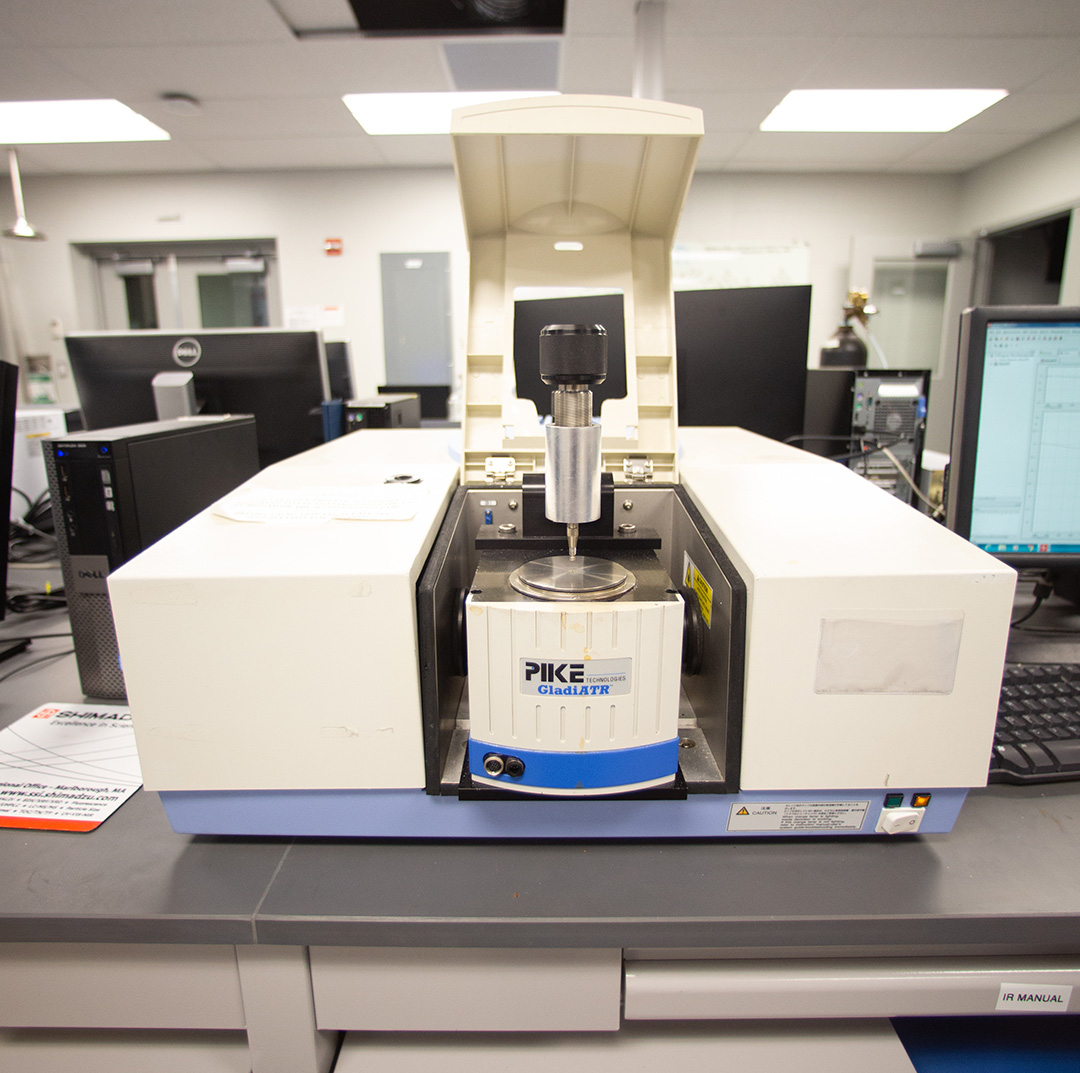
Infrared Spectroscopy
Fourier Transform Infrared Spectroscopy (FTIR) is an analytical technique used to identify organic (and in some cases inorganic) materials. This technique measures the absorption of infrared radiation by the sample material versus wavelength. The infrared absorption bands identify molecular components and structures.
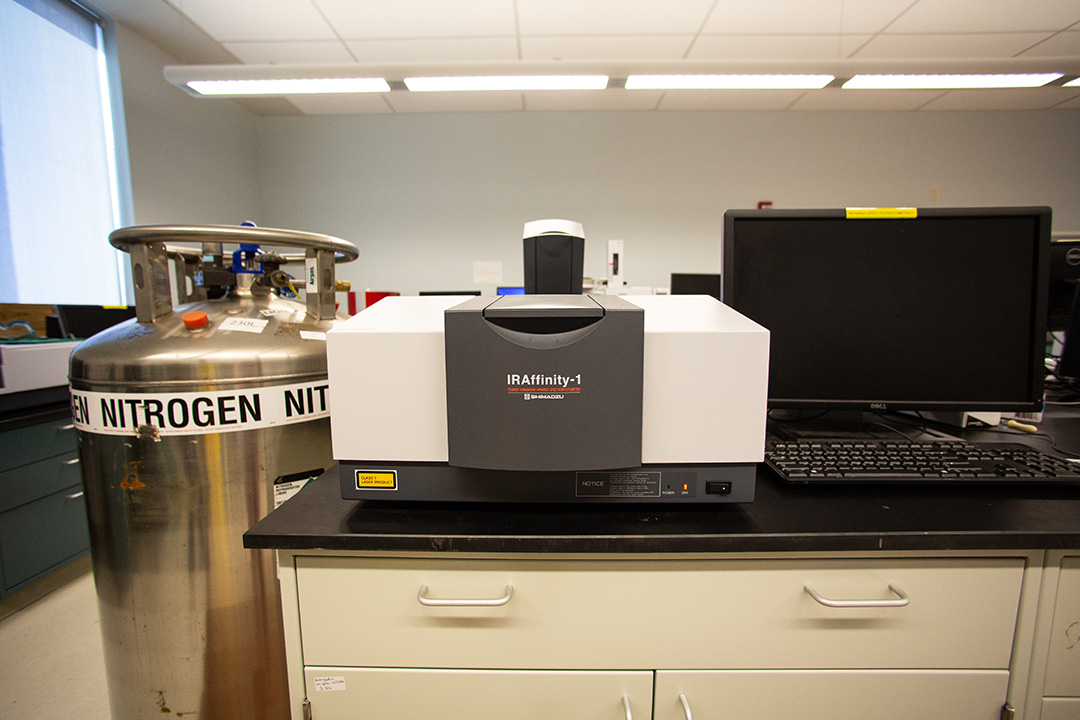
NMR
Nuclear Magnetic Resonance (NMR) spectroscopy is an analytical chemistry technique used in quality control and research for determining the content and purity of a sample as well as its molecular structure.
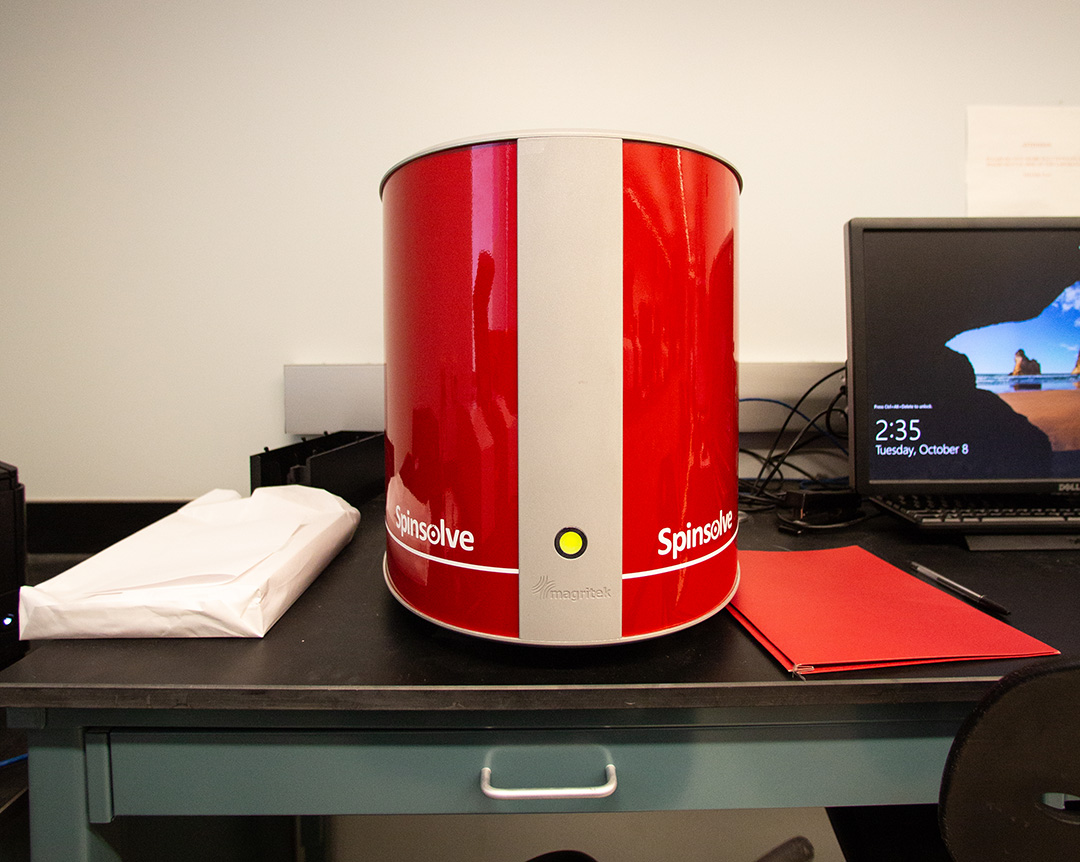
Nuclear Magnetic Resonance Spectroscopy (NMR)
Nuclear Magnetic Resonance (NMR) spectroscopy is an analytical chemistry technique used in quality control and research for determining the content and purity of a sample as well as its molecular structure.
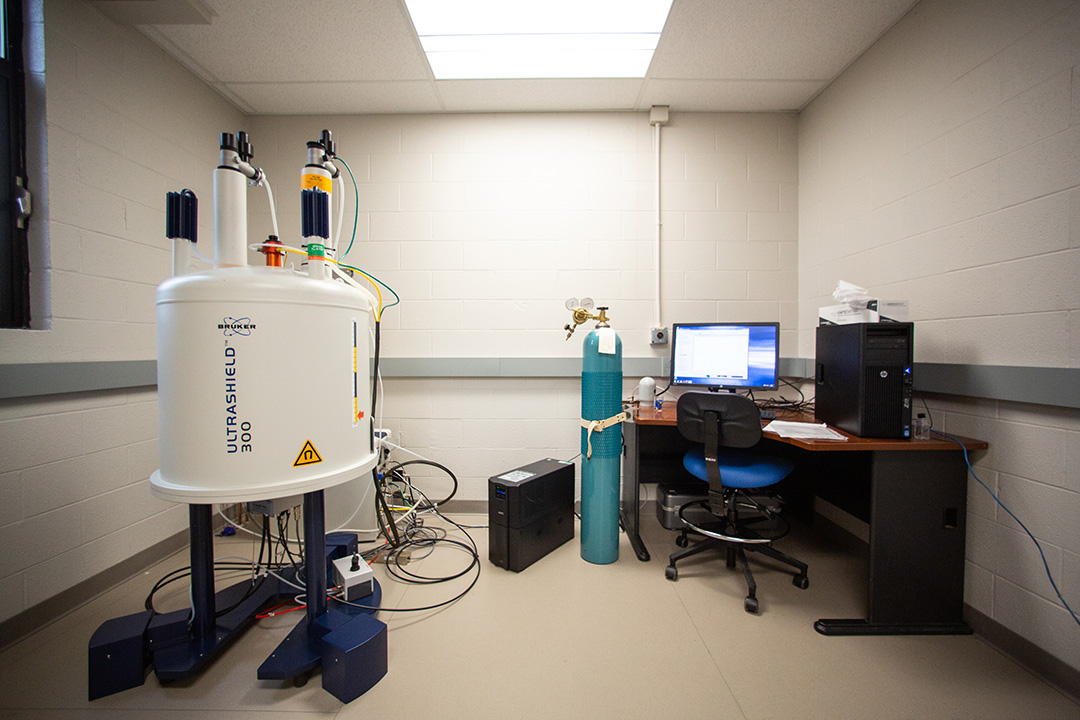
Nuclear Magnetic Resonance Spectroscopy (NMR)
Nuclear Magnetic Resonance (NMR) spectroscopy is an analytical chemistry technique used in quality control and research for determining the content and purity of a sample as well as its molecular structure.
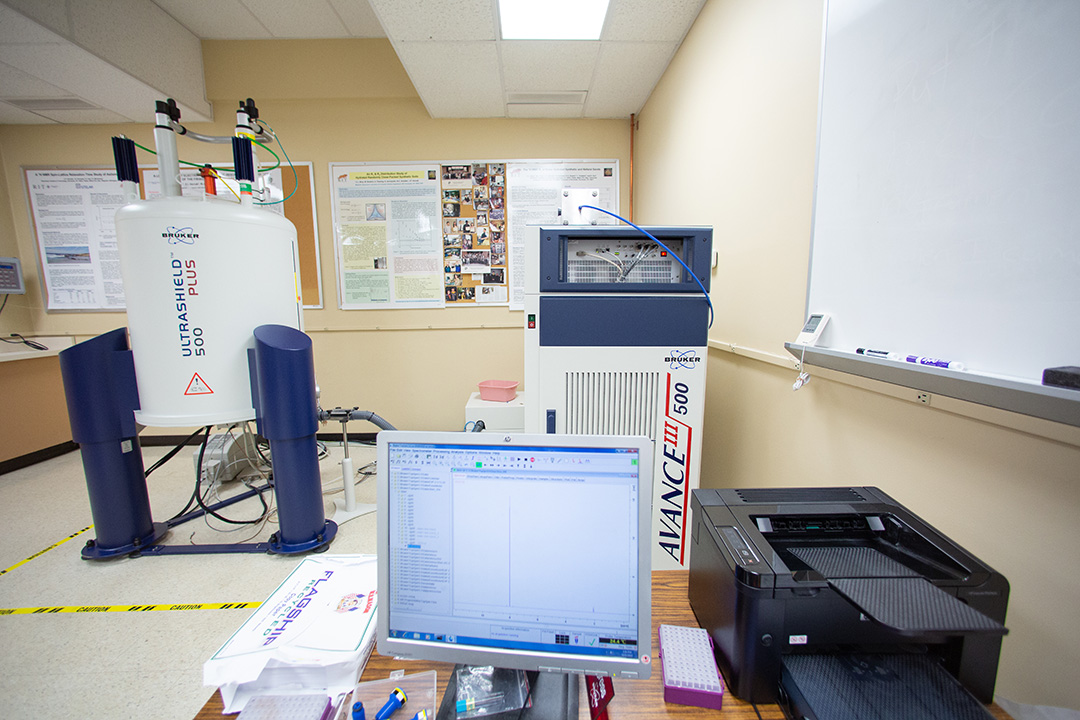
Size Exclusion Chromatography (GPC) With ELSD, UV, and RID Detection
Gel permeation chromatography (GPC) is a type of size exclusion chromatography (SEC), that separates analytes on the basis of size. The technique is often used for the analysis of polymers.
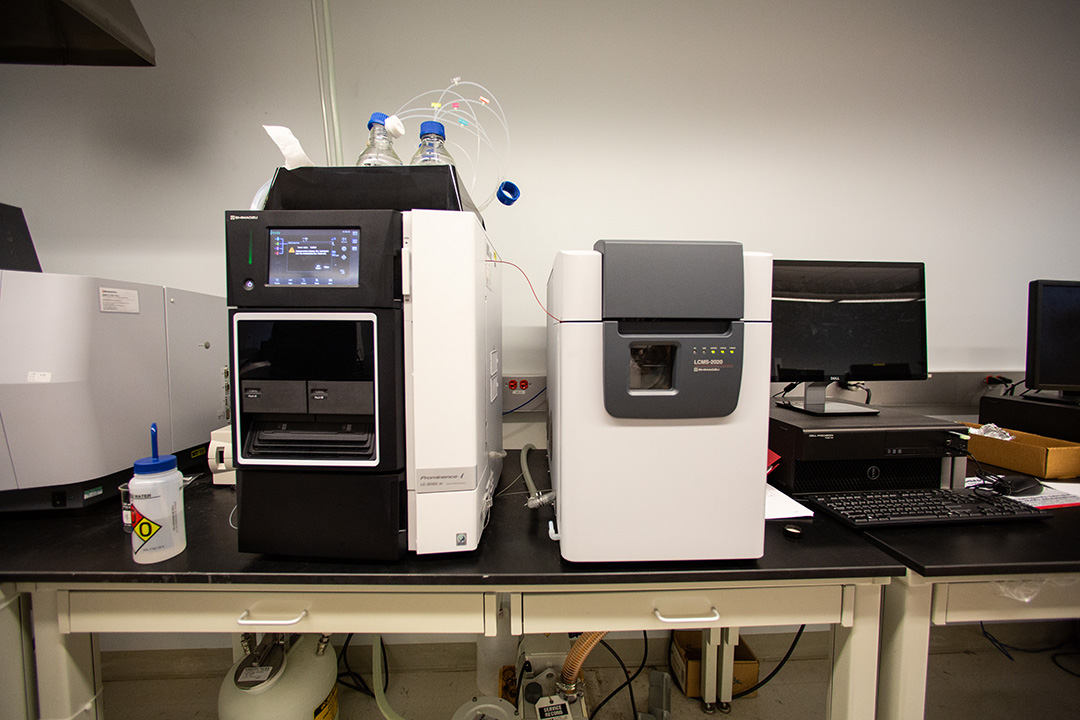
Thin Layer Chromatography-Mass Spectroscopy (TLC-MS)
TLC-MS combines the ease and speed of thin-layer chromatography (TLC) with powerful on-line identification by mass spectrometry (MS).
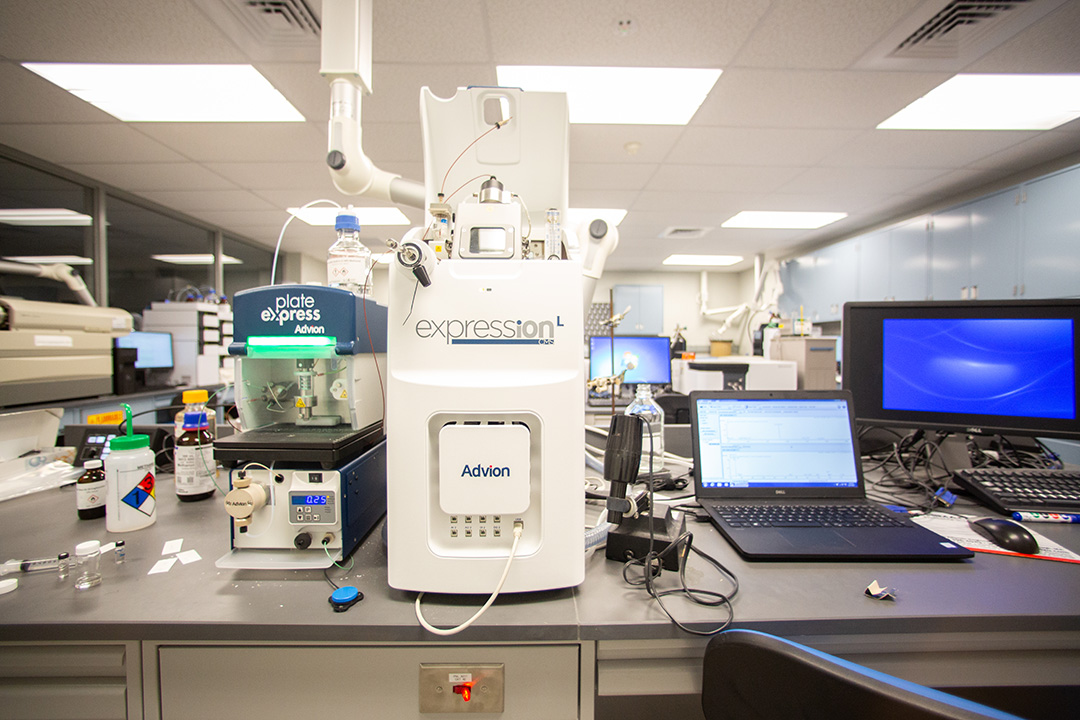
Ultra High Performance Liquid Chromatography-Mass Spectroscopy (UHPLC-MS)
Ultra hi-pressure Liquid chromatography–mass spectrometry (UHLC-MS) is an analytical chemistry technique that combines the physical separation capabilities of liquid chromatography (or HPLC) with the mass analysis capabilities of mass spectrometry (MS). This instrument is designed to work at very high performance for quick analyses of less than one minutes per sample.
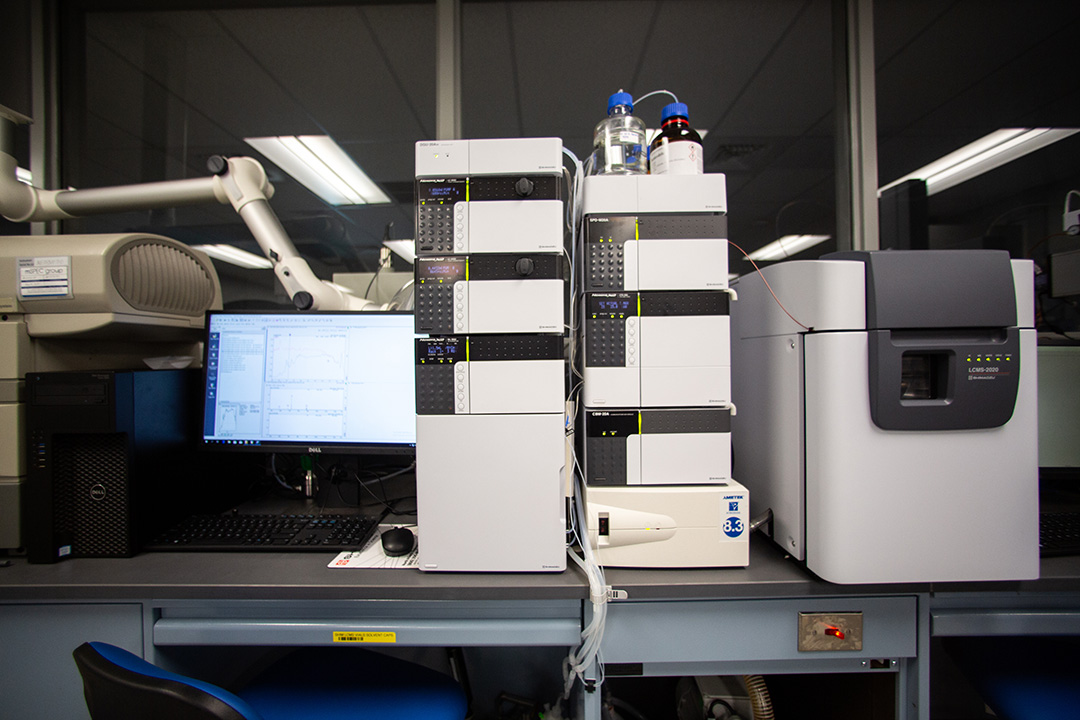
UV-VIS
Ultraviolet–visible spectrophotometry (UV–Vis) refers to absorption spectroscopy or reflectance spectroscopy in part of the ultraviolet and the full visible spectral regions.
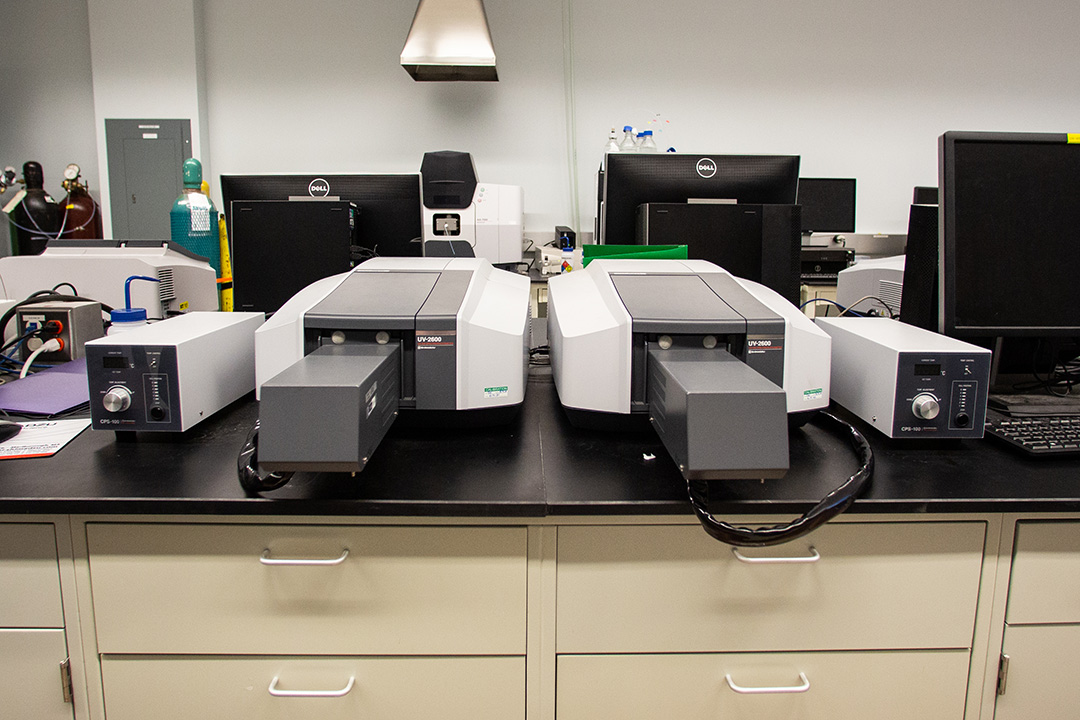
UV-VIS
Ultraviolet–visible spectrophotometry (UV–Vis) refers to absorption spectroscopy or reflectance spectroscopy in part of the ultraviolet and the full visible spectral regions.
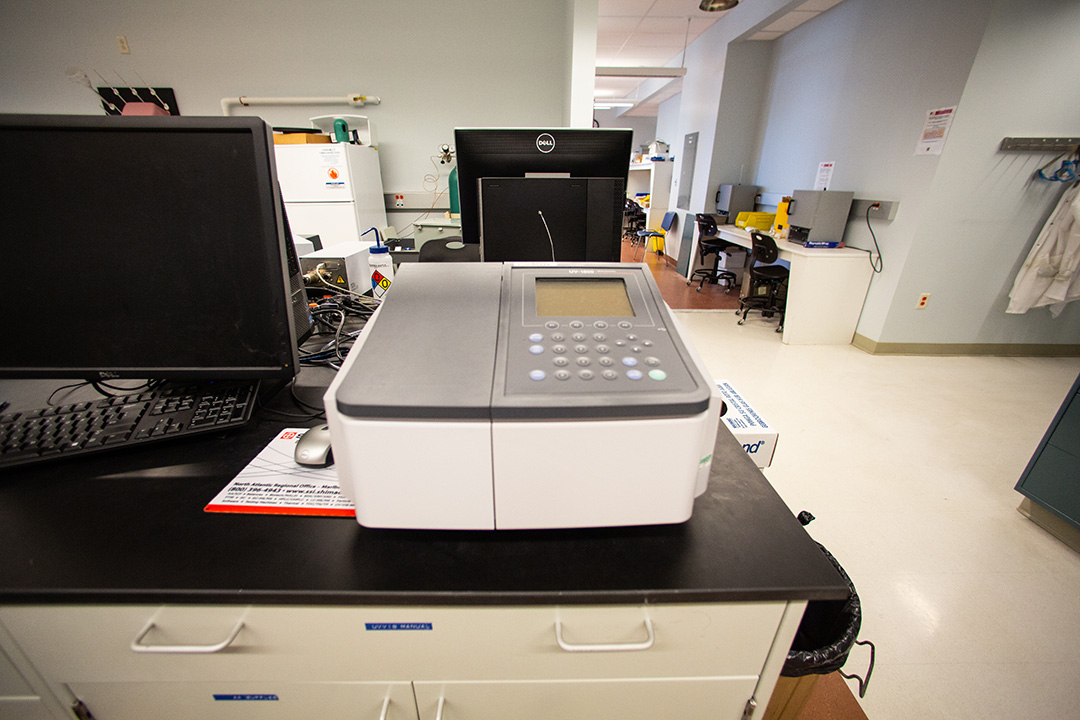
UV-VIS
Ultraviolet–visible spectrophotometry (UV–Vis) refers to absorption spectroscopy or reflectance spectroscopy in part of the ultraviolet and the full visible spectral regions.
